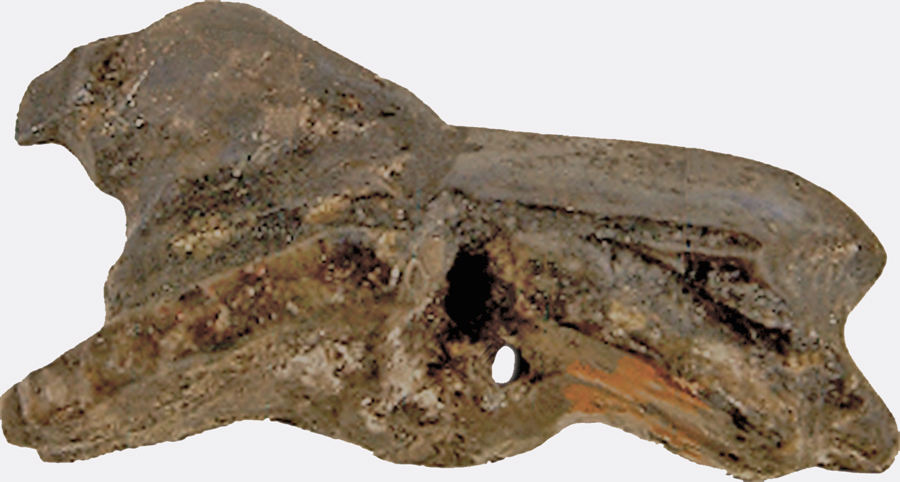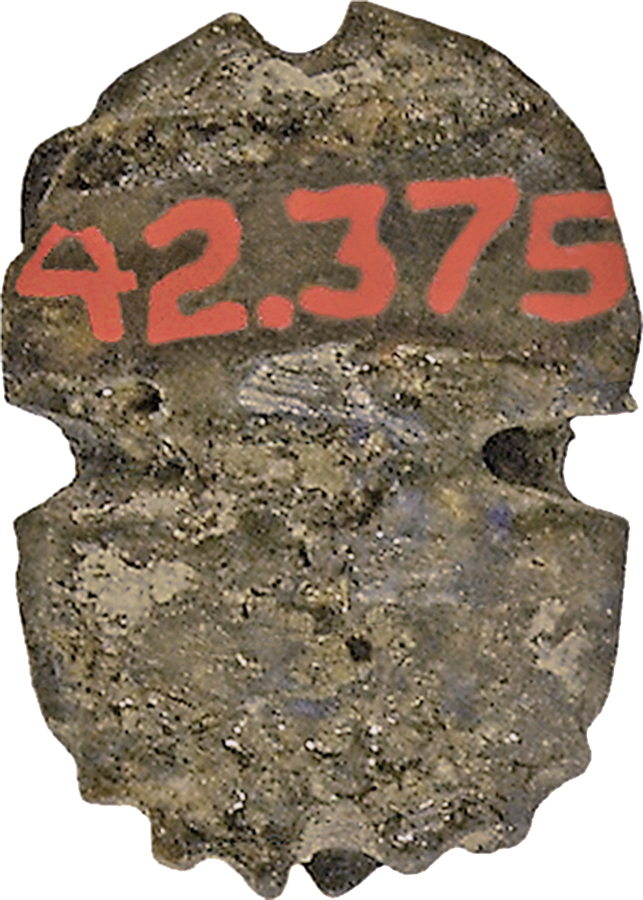Naturalistic Scarab with Hawk's Head
(Ancient Egypt and Nubia )
The ancient Egyptians believed that the dung beetle, the Scarabaeus sacer, was one of the manifestations of the sun god. Representations of these beetles were used as amulets, and for ritual or administrative purposes.
This scaraboid combines the type of a naturalistic scarab with hawk head. The back of the scarab is flat, and the hawk head raised. The pronotum (dorsal plate of the prothorax) and the elytron (wing cases) are separated by an incised partition line. The head of the hawk is modeled, and the round eyes were originally inlaid. The extremities and belly are simply modeled and somewhat stocky. A central notch is at each edge. The body is detailed executed for its small size, and the hawk head and beetle body join in a balanced way. The bottom is more roughly carved, the outer shape is reminiscent of natural formed scarabs, the front with deep serration notches, but there are no extremities molded on the underside. The basic form of the scaraboid is long-oval.
The hawk-scaraboid has a regenerative connotation, and was most probably attached to mummy wrappings. The hawk head of the amulet strengthens the solar renewal connotation of the amulet, and may focus on the transition aspect.
Provenance
Provenance (from the French provenir, 'to come from/forth') is the chronology of the ownership, custody, or location of a historical object.
Henry Walters, Baltimore, 1930, [mode of acquisition unknown]; Walters Art Museum, 1931, by bequest.
Geographies
Egypt (Place of Origin)
Measurements
H: 9/16 x W: 3/8 x D: 5/16 in. (1.4 x 0.9 x 0.75 cm)
Credit Line
Acquired by Henry Walters, 1930
Location in Museum
Not on view
Accession Number
In libraries, galleries, museums, and archives, an accession number is a unique identifier assigned to each object in the collection.
In libraries, galleries, museums, and archives, an accession number is a unique identifier assigned to each object in the collection.
42.375










